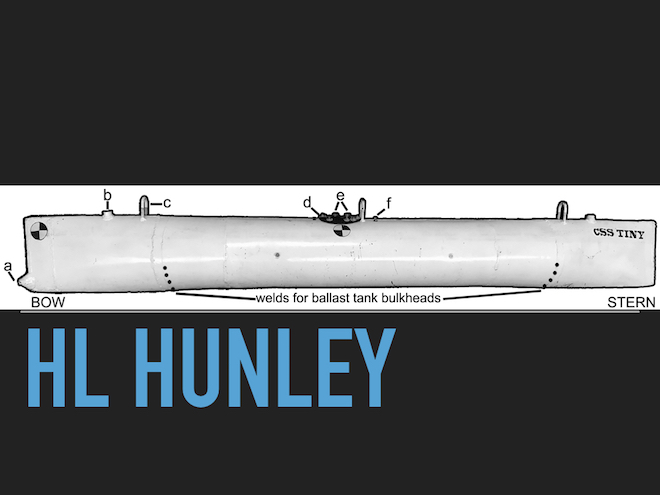
On February 17,1864, a little more than a year before Robert E. Lee’s surrender would end the American Civil War, the confederate submarine, HL Hunley torpedoed the USS Housatonic. The Housatonic was lost and five of her crew killed, as the Hunley became the first submarine in the world to successfully sink a ship. But then something odd happened. The Hunley disappeared and was lost to the ocean for over a century.
In 1995, the National Underwater and Marine Agency finally found the Hunley, and in 2000, with preservation funding in place, the vessel was raised from the ocean floor. But far from answering questions about its fate, raising the ship only deepened the mystery. Aside from holes formed well after the submarine sank, the Hunley was undamaged. Skeletons of the eight man crew, still inside the ship told a bizarre tale. Each sailor was still at his station - there were no visible injuries, and no one tried to escape.
Why did the ship sink? Why didn’t the crew try to get out? These have been the two major questions surrounding the Hunley until now. Researchers from Duke University and the Bureau of Alcohol, Tobacco, Firearms, and Explosives think the Hunley’s fate was sealed as soon as it launched its torpedo.
To find out, the team built a 1/6 scale model of the Hunley and fitted it with pressure gauges to measure effects on the ship after detonating various explosions meant to mimic the Hunley’s torpedo launch.
With everything in place, the research group began their experiment with a bang, measured the explosive results, and then ran a series of mathematical calculations to determine how the explosions would have affected the Hunley.
What they found was shocking. The research team says that the Hunley crew unleashed a “sharp-rising pressure wave” as soon as they launched the torpedo. The wave created a giant blast of air so intense the scientists say it would likely have caused fatal pulmonary or brain trauma. The research group say the crew would have died instantly, explaining why the Hunley wasn’t damaged and why the crew didn’t flee.
The group published their work in PLOS one and it is available here. https://doi.org/10.1371/journal.pone.0182244



